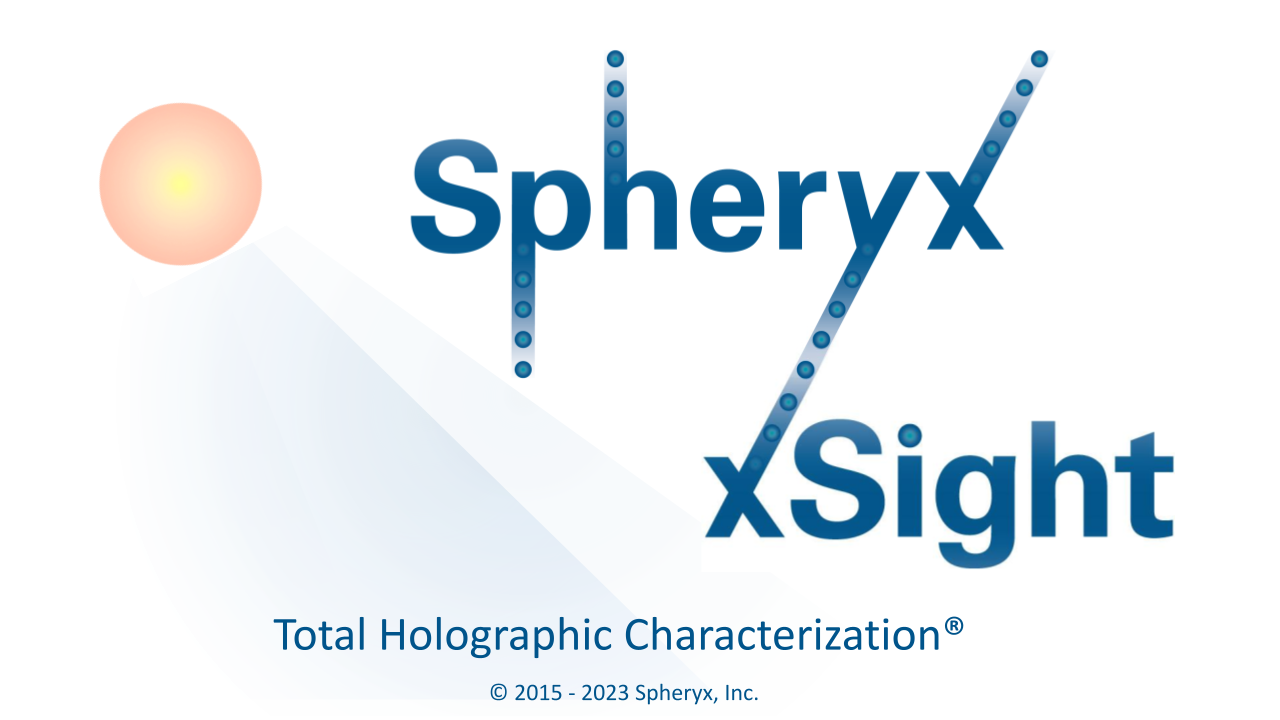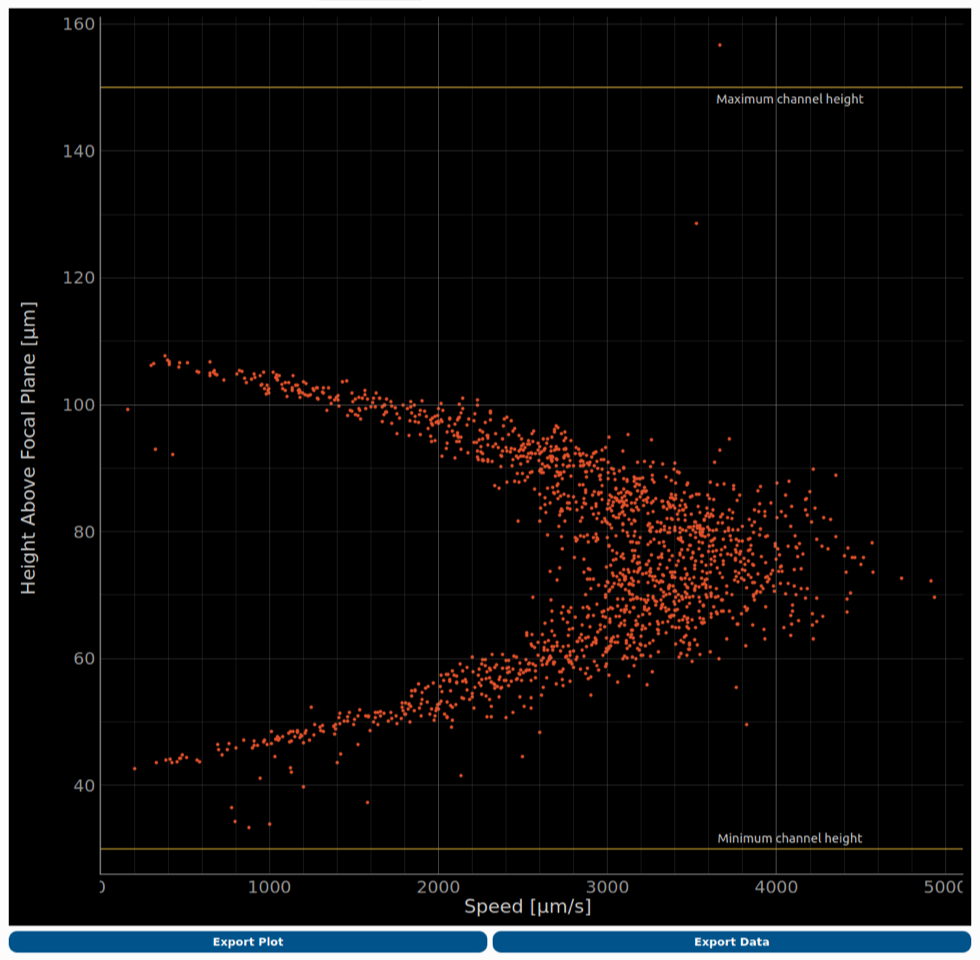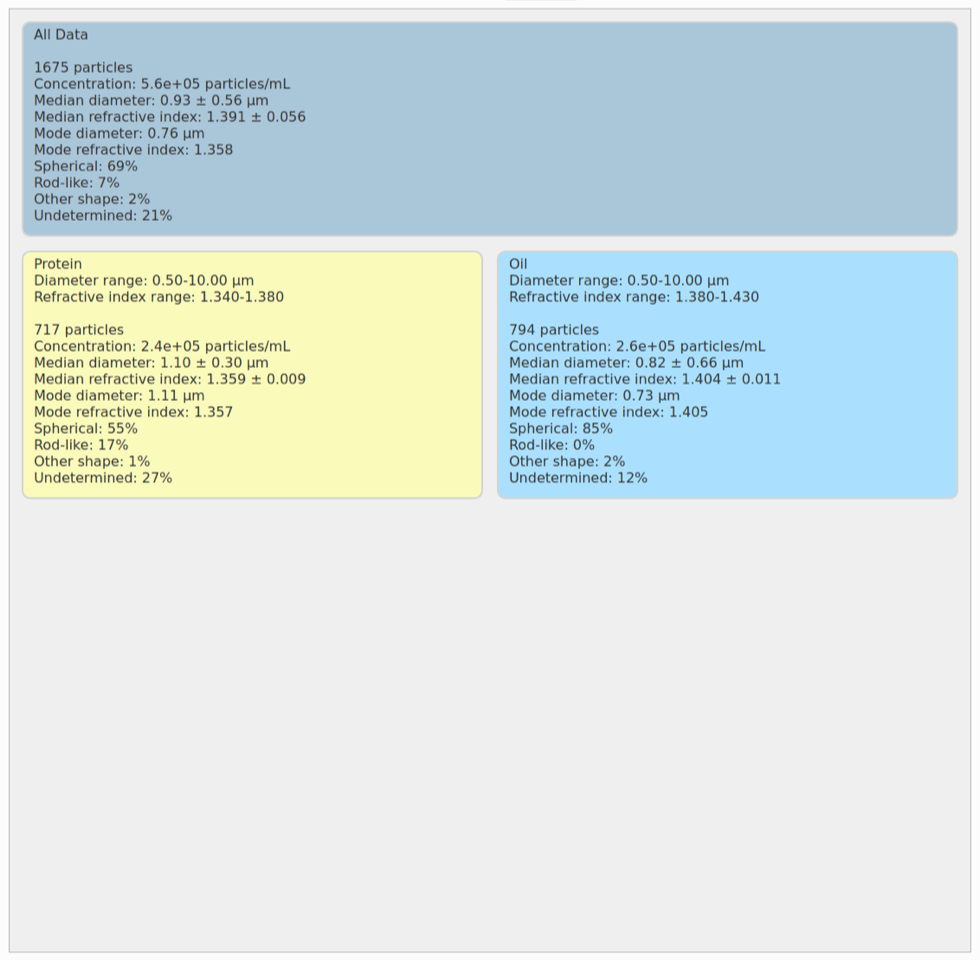
Above is a typical Particle Distribution plot of a sample that contains protein aggregates and silicon oil emulsion droplets. This plot has 3 regions:
(1) The main body of the plot is a scatter plot where the x-axis is particle size and the y-axis is particle index of refraction. Each point on the plot represents a single particle. The color represents a heat map corresponding to the density of particles in each region. Warm colors signify higher particle density and cool colors represent lower particle density. The user can create a “region of interest” box around areas of the scatter plot where particles of a particular size and index can be monitored. In the example above, there is a blue box around the region where oil droplets are expected and a yellow box around the region where protein aggregates are expected. These boxes allow the user to standardize regions for analysis; for example, to simultaneously measure the concentrations of multiple different species present in the sample, even when the particles are the same size. These boxes can be stored for future use. The boxes can be designated by “drop-and-drag” to the desired location and size, or entered numerically.
(2) Above the scatter plot is a density plot of the size of particles present in the sample. The size distribution of all particles present in the sample is shown, as well as the size distribution in any user-enterable Region of Interest boxes that have been added. The density distributions of the regions of interest are color coded to match the color of each box.
(3) To the right of the scatter plot is the density plot of index of refraction of the particles present in the sample. Since particles of different composition have different indexes of refraction, this axis represents the compositions of the different species present in the sample. Again, the distribution of the total composition is shown as well as the distributions of the Region of Interest boxes. In the example above you can see both the blue peak (oil droplets) and the yellow peak (protein aggregates).









